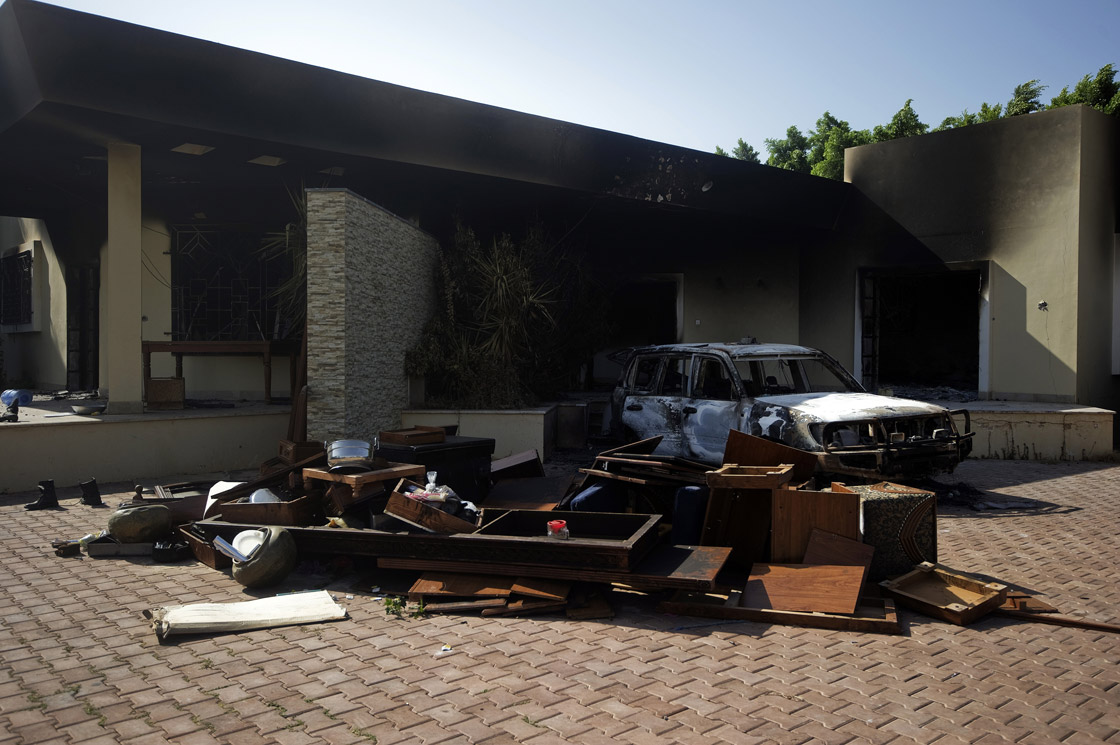TORONTO – The U.S. ambassador to Libya and three other Americans were killed in an attack on the U.S. Consulate in Benghazi by protesters angry over a film that ridiculed Islam’s Prophet Muhammad.

Ambassador Chris Stevens, 52, died as he and a group of embassy employees went to the consulate to try to evacuate staff as the building came under attack by a mob firing machine-guns and rocket-propelled grenades. He was the first U.S. ambassador to be killed in the line of duty since 1979.
The New York Times writes that Stevens was admired by Libyan rebels for his support of their struggle during the uprising against Colonel Moammar Gadhafi. The Times suggests his death raises many questions, such as: are American officials at risk in Libya when the changes in the Arab world have not successfully ended the region’s anger toward the U.S.? Will American public opinion change about the probability of a democratic opening of the Arab Spring?
The attack in Libya came hours after Egyptian protesters climbed the walls of the U.S. Embassy in Cairo, pulling down the American flag and temporarily replacing it with a black Islamic banner.
The brazen assaults – the first on U.S. diplomatic facilities in either country – underscored the lawlessness that has taken hold in both Egypt and Libya after revolutions ousted their autocratic secular regimes and upended the tightly controlled police state in both countries. Islamists, who were long repressed under the previous regimes, have emerged as a powerful force but new governments in both nations are struggling to achieve stability.

A Libyan man waves the revolution flag while tens of thousands gather at Martyrs’ Square in Tripoli on August 31, 2011 to celebrate the Muslim Eid al-Fitr feast as they rejoiced in the collapse of the regime. Credit: Carl De Souza, AFP/Getty Images
Libya has been also hit by a series of recent attacks that served as evidence of the deep and persistent security vacuum in the country after the fall of Gadhafi’s regime, which was ousted by rebels backed by a NATO air campaign. Many Libyans believe that unrest in their country is in part the work of Gadhafi’s loyalists who want to undermine efforts to rebuild the country after last year’s ruinous civil war.
The Globe and Mail suggests that Libya was meant to be an example of U.S. President Barack Obama’s successful use of military intervention, but barely a year later Libya’s fragile democracy has lost control with violent Islamists on the rise. Anti-Americanism continues to be present in the Arab world, despite the U.S. claims of attempting to help.

U.S. Secretary of State Hillary Clinton meets soldiers at the steps of her C-17 military transport upon her arrival in Tripoli, Libya on October 18, 2011. Credit: Kevin Lamarque, AFP/Getty Images
Al Jazeera recently portrayed attacks on mosques in Libya as a sign of a challenge to the newly-instated democratic order post-Gadhafi. President of the newly elected National Congress (the interim parliament) Dr. Mohamed al-Magariaf was one of the initial dissenters against Gadhafi, and hopes to stress tolerance as a basis for Libya’s democratic reconstruction, though the recent attacks indicate a climate ripe for challenges to this stance.
With files from The Associated Press
- U.K. royals unite with Kate back at her first public event since cancer diagnosis
- FAA investigating Boeing 737 ‘Dutch roll’ incident, ‘substantial’ damage
- After 70 years, DNA test reunites 3 long-lost siblings across the pond
- Alex Jones’ assets to be liquidated to pay Sandy Hook lawsuits, judge rules


Comments